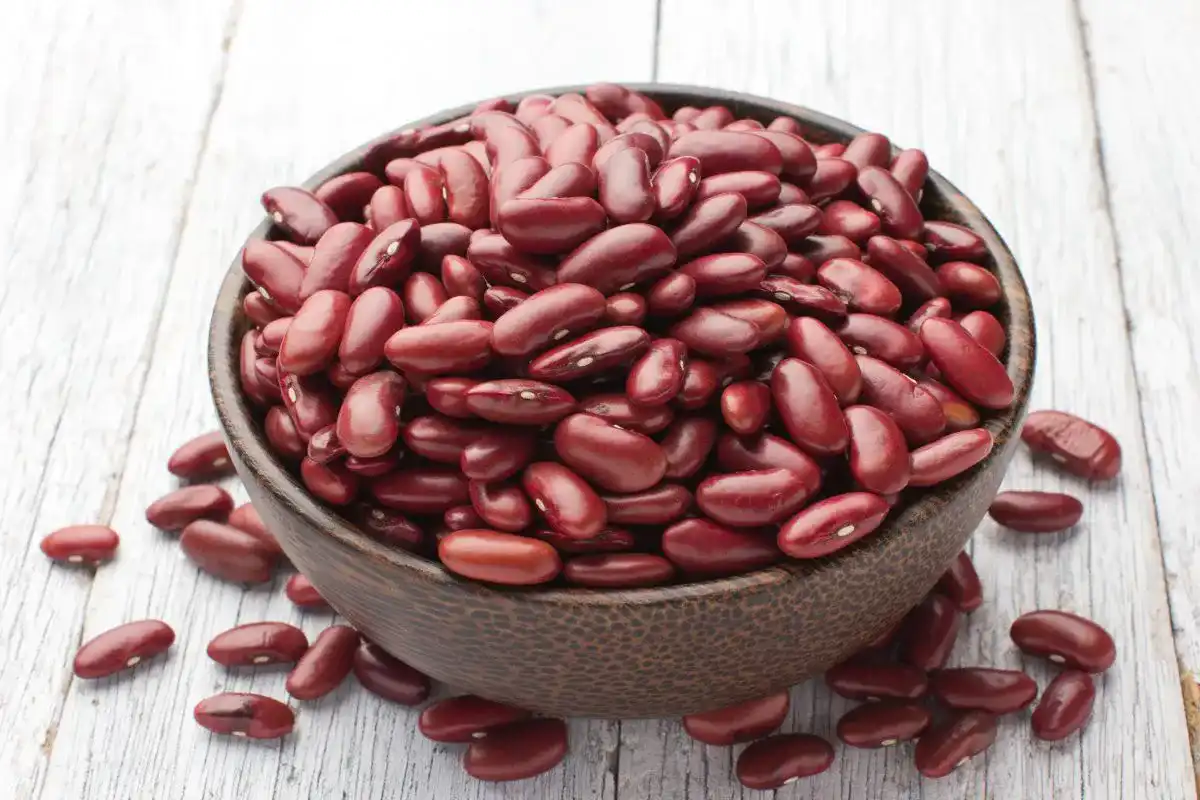Introduction
Speckled butter beans, a staple in both culinary and nutritional discussions, offer a fascinating blend of flavor, texture, and health benefits. These beans, often highlighted in queries such as “Are speckled butter beans good for you?”, bring a rich tapestry of history, characteristics, and nutritional value to the table. This introduction aims to unpack the essence of these legume, providing insights into their definition, distinct qualities, and origins.
What Are Speckled Butter Beans?
Speckled butter beans are a variety of the Phaseolus lunatus species, known for their unique appearance and nutritional profile. Delving into their characteristics and background offers a deeper understanding of their role in diets and cuisines worldwide.
Definition and Characteristics
- Appearance: These beans are recognizable by their large, flat shape and the distinctive speckled patterns that grace their skin. The speckles range in color, typically set against a creamy or light green background.
- Texture and Flavor: Speckled butter beans are celebrated for their creamy texture and rich, buttery flavor, making them a preferred ingredient in a variety of dishes.
- Nutritional Profile: Rich in proteins, fiber, vitamins, and minerals, these beans are a powerhouse of nutrition, contributing to various health benefits.
Brief History and Origin
- Origins: Speckled butter beans have their roots in South America, with a history that stretches back thousands of years. They were a staple in the diets of the indigenous peoples before spreading across the globe.
- Culinary Journey: Over the centuries, these beans have been embraced by different cultures, each incorporating them into traditional dishes that highlight their unique qualities.
- Regional Significance: Particularly in the Southern United States, this type of beans have become synonymous with home cooking and comfort food, celebrated in family gatherings and community feasts.
The Nutritional Profile of Speckled Butter Beans
Speckled butter beans, with their creamy texture and rich flavor, not only add a delicious component to meals but also bring a host of nutritional benefits. Addressing the query “Are speckled butter beans good for you?” requires diving into their nutritional content and understanding how they stack up against other legumes. This exploration highlights the key nutrients these beans offer and compares them to other members of the legume family.
Key Nutrients
Speckled butter beans are a nutritional powerhouse, providing a range of essential nutrients that contribute to a healthy diet:
- Protein: A crucial building block for muscles and tissues, these beans are a great source of plant-based protein.
- Fiber: High in dietary fiber, they help promote digestive health and can aid in maintaining a healthy weight.
- Vitamins: Rich in vitamins, especially B vitamins, which play a vital role in energy production and the nervous system.
- Minerals: A good source of minerals such as iron, magnesium, and potassium, which are essential for blood health, muscle function, and blood pressure regulation.
Comparison with Other Legumes
When compared to other legumes, speckled butter beans hold their own in terms of nutritional value:
- Protein Content: While beans like chickpeas and lentils are also high in protein, speckled butter beans provide a comparable amount, making them an excellent choice for those seeking plant-based protein sources.
- Fiber: Compared to other beans, such as black or kidney beans, speckled butter beans offer a similar or slightly higher fiber content, contributing to a feeling of fullness and supporting digestive health.
- Vitamins and Minerals: They match or exceed the vitamin and mineral content of many other legumes, offering a rich supply of nutrients in a single serving.
Unique Nutritional Aspects
- Low in Fat: Speckled butter beans are low in fat, making them a heart-healthy choice.
- Antioxidant Properties: They also contain antioxidants, which are compounds that help fight free radicals and reduce oxidative stress.
Health Benefits and Considerations
The question, “Are speckled butter beans good for you?” leads us to a detailed examination of the health benefits these beans offer. These legume, with their distinctive creamy texture and speckled appearance, are more than just a staple in culinary traditions; they are a potent source of nutrients that confer a variety of health benefits. From supporting digestive health to contributing to muscle building and heart health, these beans are a nutritional powerhouse worth incorporating into your diet.
Health Benefits
Speckled butter beans stand out for their:
- High Fiber Content: Essential for digestive health, aiding in bowel regularity and helping to prevent constipation.
- Protein Source: Offers a plant-based protein option for muscle building and repair, crucial for athletes and those looking to maintain or increase muscle mass.
- Low Fat: Supports heart health by contributing to a diet low in saturated fats, which is linked to reduced risk of heart disease.
- Vitamins and Minerals: A significant source of vitamins and minerals, including B vitamins, iron, magnesium, and potassium, supporting overall health and wellness.
High Fiber Content and Digestive Health
The fiber in speckled butter beans promotes healthy digestion by:
- Enhancing bowel regularity.
- Aiding in the prevention of digestive disorders.
- Contributing to a feeling of fullness, which can help in weight management.
Protein Source for Muscle Building and Repair
As a rich source of plant-based protein, speckled butter beans contribute to:
- Muscle building and repair, essential for athletes and physically active individuals.
- The maintenance of muscle mass, important for overall health and metabolism.
Low Fat and Heart Health
The low fat content of speckled butter beans offers benefits for heart health by:
- Reducing the intake of saturated fats, linked to lower risk of heart disease.
- Supporting cholesterol management, contributing to cardiovascular health.
Vitamins and Minerals Contribution
Speckled butter beans are a valuable source of various vitamins and minerals, offering:
- B vitamins, essential for energy production and the nervous system.
- Iron, crucial for blood health and energy levels.
- Magnesium, important for muscle and nerve function, as well as blood pressure regulation.
- Potassium, which supports heart health and blood pressure management.

Speckled Butter Beans in Diet
Incorporating into Meals
Speckled butter beans can be seamlessly integrated into your diet through various simple and complex dishes. Their mild flavor and creamy texture make them an excellent addition to both vegetarian and meat-based meals. Here are some ideas:
- Salads and Sides: Enhance green salads by adding cooked speckled butter beans for a protein boost. They also serve as a hearty side dish when sautéed with garlic and herbs.
- Soups and Stews: Their creaminess thickens soups and stews, providing a satisfying mouthfeel and added nutritional benefits.
- Main Courses: Use them as the main protein in vegetarian dishes or as a complement to meat in casseroles and baked dishes.
Recipes and Preparation Methods
The versatility of speckled butter beans is evident in the endless recipes available. Here are a few methods to prepare them:
- Classic Butter Bean Salad: Combine cooked speckled butter beans with diced tomatoes, onions, cucumber, and a light vinaigrette for a refreshing salad.
- Creamy Butter Bean Soup: Blend cooked beans with stock and herbs for a creamy soup, topping with crispy bacon or croutons.
- Baked Speckled Butter Beans: Mix cooked beans with tomato sauce, spices, and cheese, then bake until bubbly for a comforting dish.
Incorporating these beans into your diet is straightforward. Begin with canned beans for convenience or opt for dried beans, which require soaking and cooking but offer a fresher taste. Regardless of your choice, these legume add depth and nutrition to any meal.
For those looking to explore more culinary creations with speckled butter beans, Delicious Chef offers a dedicated section on speckled butter beans recipes. From traditional dishes to innovative culinary experiments, find inspiration to make these nutritious beans a staple in your kitchen.
In crafting meals around speckled butter beans, consider their nutritional profile. Rich in protein, fiber, and essential nutrients, they not only contribute to a balanced diet but also support various health goals, from weight management to muscle building. Their versatility in recipes—from soups and salads to main dishes—ensures that incorporating this type of beans into your diet is both beneficial and enjoyable.

